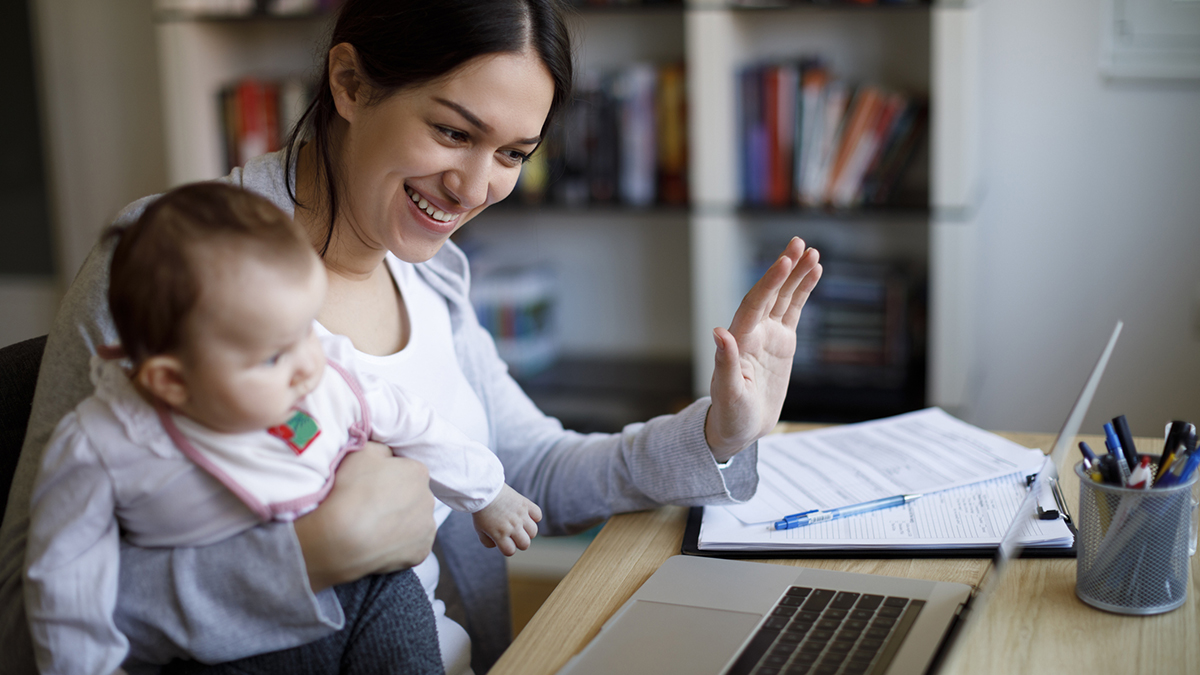
The phrase “social distancing” is so counterintuitive. We are asked to be physically distant to stay healthy, and we need to be socially connected to stay healthy. Luckily, those setting policies are beginning to understand this. In March, the World Health Organization (WHO) said that, “while maintaining a physical distance” was “absolutely essential” amid the global pandemic, “it does not mean that socially we have to disconnect from our loved ones, from our family.”1 This idea is gaining ground with more people beginning to use the phrase, physically distant.
Our lives have been impacted beyond most people’s imaginations. In February, we asked ourselves if we might come into contact with this new Coronavirus. Given it was spreading from country to country, it seemed important, but not present. Then, people in the United States contracted the disease and some died. By mid-March, several states closed schools, childcare programs and businesses and encouraged work from home. The phrase “social distancing” came into use. Many people immediately reacted negatively to the idea of such isolation. Intended to encourage people to stay at least six feet apart from each other in public settings, the phrase implied less connection with all people. “Staying in touch with people feeds the human connection we all need to thrive daily, but physical distance is vital to slowing down the spread of the COVID-19 virus,” says Dr. Shahida Fareed, psychologist at Geisinger Grays Woods.2
Connections with other people are vital to our feelings of belonging and security. Strong social connections can help buffer stresses and reduce feelings of isolation. Positive relationships with other people provides an opportunity for learning new things, exchanging favors and providing encouragement.3 When we feel respected and supported by others, it empowers us to affirm and support others around us. It creates the positive version of “what goes around comes around” — a mutually reinforcing and rewarding relationship. When we are socially connected, we gain access to other protective factors as well. We find concrete supports as we talk with friends, neighbors, community helpers and family support program staff. We can ask about parenting and child development (including social and emotional behaviors) concerns and share successes. We build resilience as we sense the affirmation of others and through sharing our experiences reflect on what is working and what not and we learn to take care of ourselves.
Many people are finding fun ways to socially connect — to bring people together while not forming a crowd. Some activities include car parades to honor a birthday, anniversary or graduation; scavenger hunts for items or signs on neighbors porches or front windows; and playing games online. Many museums, libraries and zoos are offering virtual tours and activities. And check out these Action Sheets from CSSP which provide more concrete ways that you can help families build social connections.
There are practical reasons to remain physically distant — to prevent the transmission of this Coronavirus: “… distancing aims to reduce the amount of interaction people have while allowing them to carry out their necessary day-to-day activities. It also helps reduce the chances of picking up the virus and then spreading it to others.”4 Grocery stores have created one-way aisles and taped off distances for waiting in checkout lanes. Several businesses have created pick-up and delivery services. Some family support services have created curbside connections. Schools are connecting with students and parents in multiple ways from packets to posting assignments to live internet classes. Home visiting programs have pivoted to virtual personal visits and group connections/socializations and responding to families’ basic needs.
Even as our communities increase opportunities for businesses to open and people to come together in public spaces, there are still precautions to take, including wearing a mask, keeping space open between people and washing hands frequently. Regardless of keeping physically distant, we can remain socially connected, all from a physical distance. Reach out, engage with others, fill up spiritually, play games and reciprocate — give back.
Pennsylvania’s response to COVID-19:
Commonwealth of Pennsylvania
Department of Health
This article is from the Family Support News Brief, a publication by the family support services at Center for Schools and Communities, a division of Central Susquehanna Intermediate Unit.
Sources
1 Aziz, Saba. Why ‘physical distancing’ is better than ‘social distancing’. (2020, March 30). Retrieved from https://www.aljazeera.com/news/2020/03/physical-distancing-social-distancing-200330143325112.html
2 What’s the difference between physical distancing and social distancing? (2020, April 8). Retrieved from https://www.geisinger.org/health-and-wellness/wellness-articles/2020/04/08/13/47/social-distancing-vs-physical-distancing
3 Core Meanings of the Strengthening Families Protective Factors. (n.d.). Retrieved from
https://cssp.org/resource/core-meanings-of-the-strengthening-families-protective-factors/
4 Singh, Ranj. Doctor’s Note: How to do social distancing during coronavirus. (2020, March 20). Retrieved from https://www.aljazeera.com/indepth/features/doctor-note-social-distancing-coronavirus-200319081547691.html
